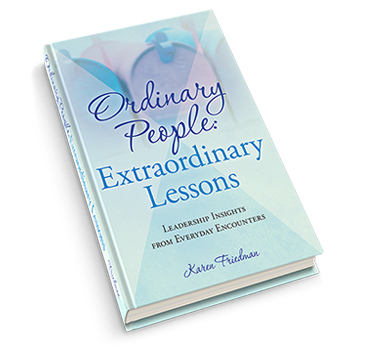On a business trip to Cartagena Columbia, I met a lovely woman named Susan. Susan spoke fluent Spanish, but not English. Since I speak English and not Spanish, we were fortunate to have a translator to help us converse.
One evening, Susan, the translator, another colleague, and I went to dinner. Together we were having very lively animated conversations thanks to the interpretation of the translator. Then midway into our evening, I realized something had changed. Without the help of the translator, I understood Susan and she understood me. How could this be when we don’t speak the same language?
The obvious is that non-verbal communication such as gestures, facial expressions and body movements can convey a wealth of information beyond words. A smile, nod or raised brow may signal confusion, happiness, or agreement. People often understand each other’s emotions, intentions, and basic messages through these non-verbal cues which enriches the interaction. But this was something more than that.
To paraphrase Wikipedia, this is called “mutual intelligibility” which is a relationship between languages or dialects in which speakers of different languages can understand each other without prior familiarity. An article published at fluentu.com, which is a foreign online language immersion site, further explores mutually intelligible languages. The author says foreign languages aren’t always as foreign as you expect. For example, if you speak Russian, you may understand more Ukrainian than you realized. German is considered partially mutually intelligible or similar to Yiddish and Dutch.
Even so, I think the understanding between Susan and me may have had more to do with common interests and our willingness to try to understand each other. While translators offer incredible support bridging linguistic divides, being able to actively listen to verbal cues such as tone and inflection and converse without a translator highlights the adaptability of human communication and connection.
When faced with language barriers, people may naturally adapt their language and communication style to try and increase understanding. This may include using simple words and phrases to enhance clarity so others can grasp the message being conveyed. When Susan and I conversed, we may have done this without realizing it, but our professional backgrounds and common experiences enabled us to create an even stronger bond and connect across languages.
As a communications coach, I advise professionals of the importance of active listening and empathy when communicating with different audiences. These two components are also essential during cross-language communication. By demonstrating attentiveness, patience, and a genuine interest in trying to understand the other person, you can create strong connections.
Years back, I was part of a State Department delegation of women from diverse nations who traveled to a conference in Uruguay. Despite the language barrier, as we were seated together, attempts to communicate in native tongues proved difficult. People were actually yelling at each other in an effort foster understanding. There was a music box perched on a chair playing softly in the background when suddenly, a woman from Bolivia stepped into the center of the room and started swaying to the rhythm.
Mesmerized, one by one, as if compelled by an invisible force, every woman in attendance rose to join her, forming a circle and clasping hands. In that moment, language was no longer a barrier. Through music and movement, we became one, transcending cultures and united in a very profound wordless connection. It is a moment I will never forget.
While language differences can pose challenges, the power of shared experiences and human connection can transcend language and geography.






